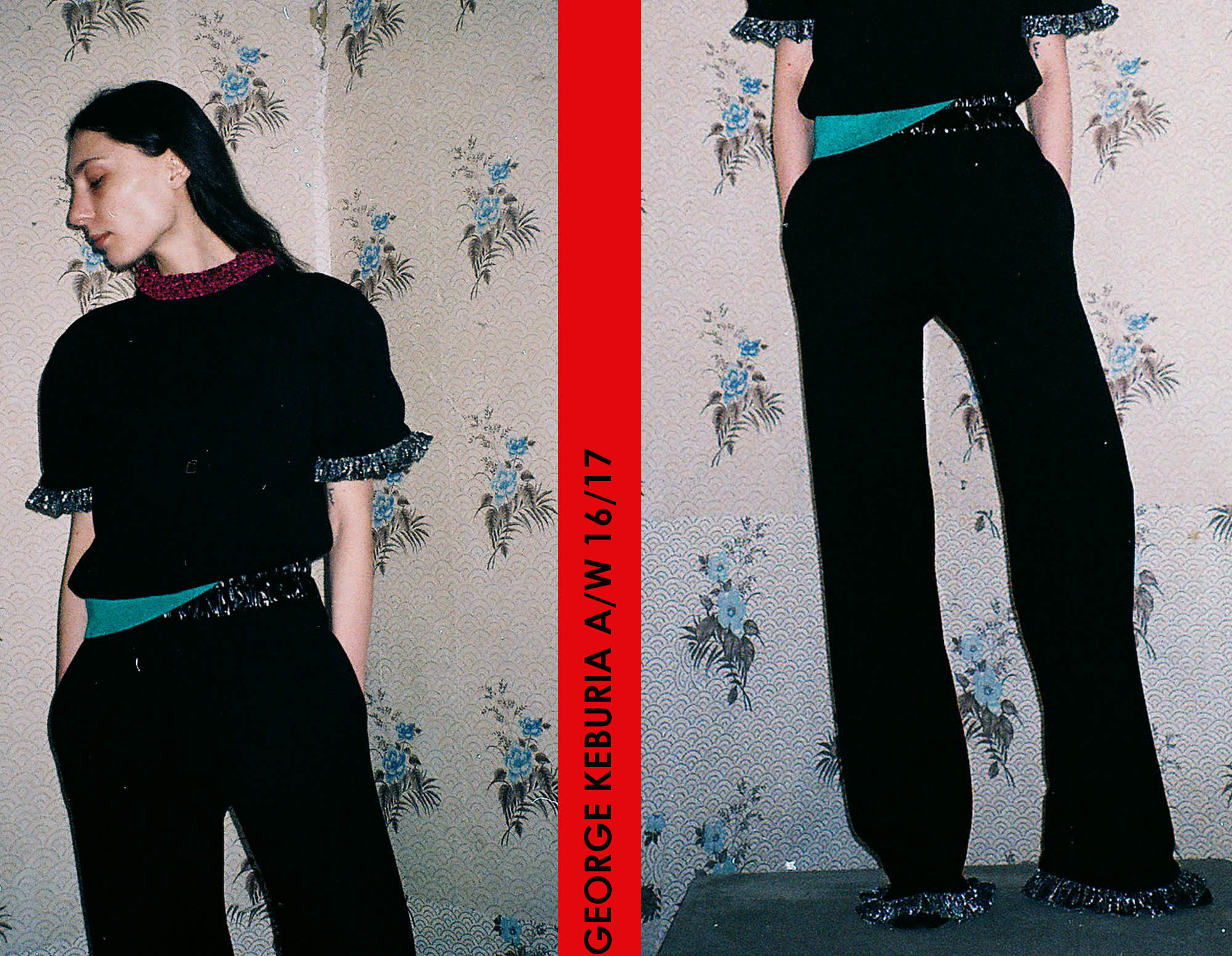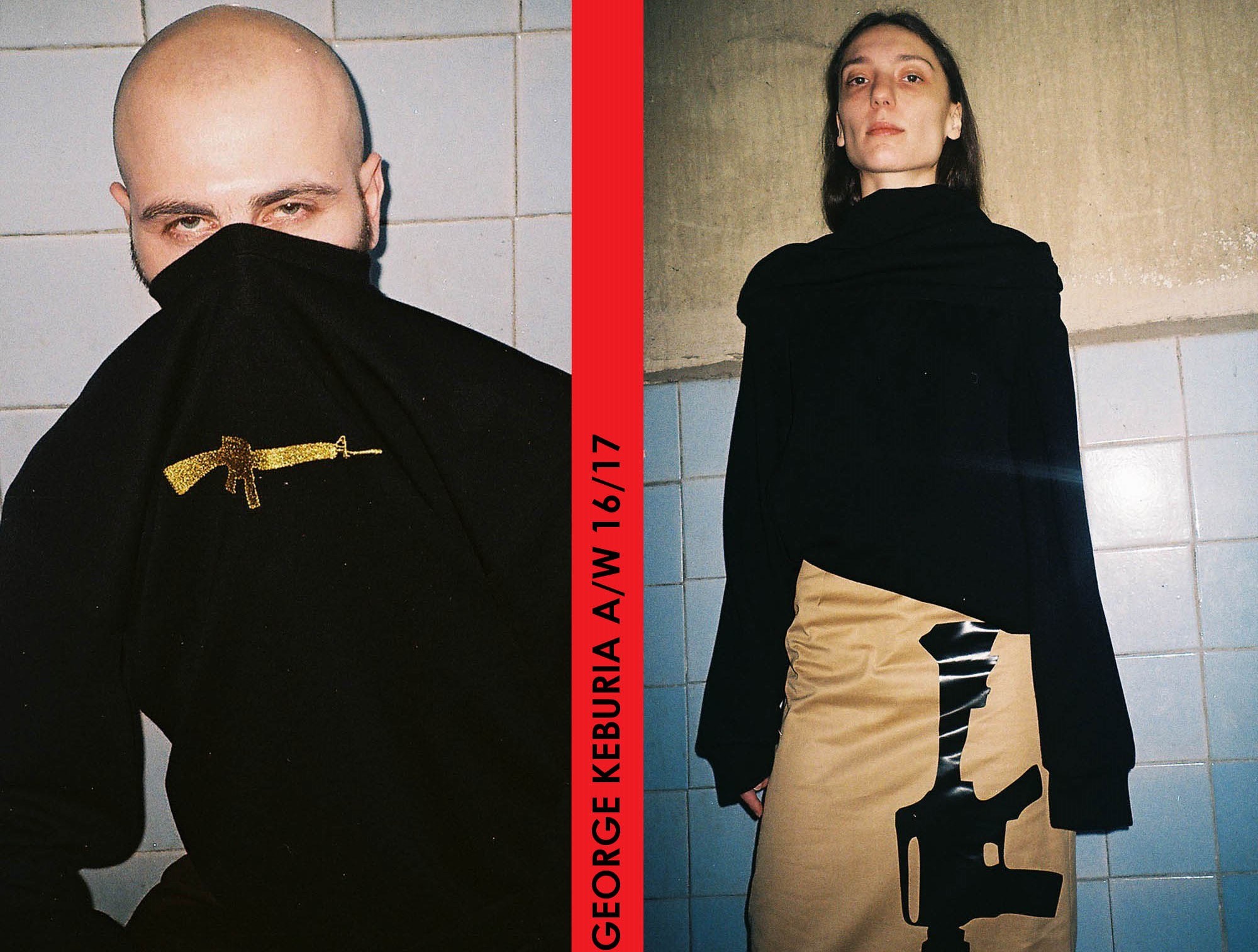The country of Georgia is mainly known as a destination for amazing mountain landscapes and a place still reeling from political turmoil and conflict with its neighbors in the Caucasus. Historically, it’s a deeply conservative society, but with the new generation of creatives born and raised in the turbulent 90s, the situation is shifting. From Tbilisi’s wild raves to photographers and film makers documenting the new face of Georgian youth, there is a lot to look out for.
But recently Georgian fashion has found itself in the spotlight because of Demna Gvasalia, leader of design collective Vetements and creative director of Balenciaga. Despite moving to Europe at the age of 20, he has emphasized the influence of his Georgian and post-Soviet heritage numerous times — something that’s got us all curious about what’s going on in this small country on the edge of Europe.

In Tbilisi, the new generation of Georgian designers is making its mark, and 25-year-old George Keburia is without doubt one of the freshest and most prolific talents. Keburia’s designs — daring, inventive, sexy — could easily appeal to a worldwide generation, yet the issues he explores in his collections are born from Georgia’s history and contemporary situation. His fall/winter 16 collection, for example, echoes the aftermath of the 90s civil war and the current anti-gay sentiment in the country.
i-D spoke with Keburia about Tbilisi’s new scene, using fashion to talk about serious issues, and Georgia’s Tumblr generation.

How did you get interested in fashion and designing clothes?
When I was a little boy, I loved to play a game I called “guess the brand.” I looked at photos of celebrities and could immediately guess what brand they were wearing. I would rather see interestingly dressed celebrities than the ones who were dressed beautifully and fashionably. Then I started sketching clothes at the back of my notebooks during my classes. One day I heard about a design contest and decided to participate. I had no experience or education in this field; I did the whole collection by hand and I won.
Could you tell a little bit about the current collection — the main story and the details, particularly the gun prints and colors?
Some details from the current collection, especially gun prints, are influenced by the economic and political consequences of the Georgian civil wars in the 90s. The gun print was used to reflect the difficult and dark times the country went through, and the rainbow colors were used to undermine that darkness, and make it more optimistic.
Georgia is often described as a very traditional country, and there has been a lot of anti-gay sentiment recently. On one sweaters you have used the word “gay” as a slogan. Is it a sort of protest from your side?
I think that a person is making a statement when she or he is wearing sweater with word “gay” printed on it, and yes, this was a statement of protest on my part too, inspired by anti-gay sentiment of our conservative culture. But it also has another aspect; as well as homosexual, ‘gay’ also means carefree and joyful. It worked as a finishing touch to a collection that was anti-gun and anti-violence.

Do you think contemporary fashion should reflect on big social issues like war or conservatism?
Reflecting social issues in art is sometimes inevitable because our daily life is so influenced by those same things. Some of my pieces are more serious, some are more playful. It depends on my mood.
How difficult is it to run a brand in Tbilisi?
The main challenge is to find the exact fabrics and materials you want to use for your collections. There is no textile manufacturing in Georgia so we do not have a diverse selection of fabrics in the few existing shops. It really drains me.
How would you describe the young creative scene in Tbilisi at the moment?
We try our best to develop scenes. There are lots of exhibitions, fashion shows, and raves, and we are more conscious of what’s new and what needs to be done to make the creative scene more exciting and appealing in Georgia.

Could you name a couple of creative people in Georgia who inspire you?
Giorgi Wazowski is a Georgian photographer and stylist with whom I have collaborated for my last several collections. He inspires me and I inspire him. I also love Mariam Natroshvili‘s artwork. She’s cool.
Are young people in Tbilisi free and inventive in how they dress?
There’s a kind of Tbilisi Tumblr generation; you see them in clubs, or hanging around the streets like a big gang, they’re kitchy and classy at the same time. It’s funny and cool.
Demna Gvasalia’s work at Vetements and Balenciaga has certainly attracted a lot of attention to Georgian designers. Does his work seem Georgian at all to you? Has it influence the way people dress and think about fashion is Georgia?
I don’t really see Georgia in his creations, although of course he is incredibly talented, he does his job perfectly, and he changed the whole aesthetic of the industry. There was a time when not so many people were dressed trashy and kitschy, and now you can see people throwing their luxurious pieces of fashion away and wearing oversized bombers and sweaters.
Credits
Text Anastasiia Fedorova
Photography Giorgi Wazowski
